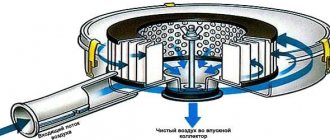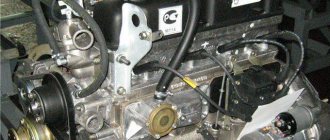03.01.2020
| (Votes: 2, Rating: 3) |
Issues discussed in the material:
- Why change your engine oil regularly?
- Consequences of untimely engine oil change
- What determines the frequency of oil changes?
- How often should you change the engine oil?
- How to properly change engine oil
- Errors when changing engine oil
- Comments from car enthusiasts about the frequency of engine oil changes
Not all motorists know how often the engine oil needs to be changed. Some listen to the recommendations provided by the manufacturer. There is only part of the logic here, since changing the oil every 15 thousand km is not always correct.
It is important to pay attention to the speed of movement and the time spent by the engine. It is also necessary to take into account the mileage, operating conditions of the machine and its technical condition. Additional factors that affect the regularity of oil changes are engine parameters and the date of the last change. From this article you will learn in detail about the above factors, rules and mistakes when changing the oil.
Why change your engine oil regularly?
How often should you change the engine oil and what will happen to the engine if you don’t do this for a long time? First you need to understand why good lubrication is so important for the power unit. The lubricating fluid consists of a base and the required amount of additives that protect the surfaces of engine elements. During operation of the machine, additives slowly decompose. As a result, deposits appear that settle on the surface of the crankcase. Also, some components of the oil oxidize, its viscosity and acidity change.
Attention! At some enterprises that produce lubricants and vehicles, the frequency with which it is necessary to change oils is indicated not by mileage, but by time.
With increasing temperature and load, the intensity of chemical processes also increases. However, production technology and chemical composition are becoming more advanced. As a result, the latest oils can protect the engine for much longer, remaining uncontaminated even at high temperatures.
Today, cars are equipped with control units that already contain a command that controls the frequency of lubricant changes in the engine. These parameters are determined using empirical dependencies. The basis for this is actual values: driving speed, engine speed, number of starts in winter, temperature conditions. When flashing the EB, an allowance is made for errors and technical characteristics, as a result of which the approximate interval for replacement is determined.
Today, car dealerships both here and abroad sell a large number of counterfeit powertrain oils. At the same time, the quality of the fuel is not up to par, so, as you understand, the engine oil must be changed frequently. The minimum mileage recommended before replacement must be reduced by 30%. For example, the manufacturer advises performing the procedure after 15 thousand km, which means you need to do it at 10 thousand km. You can't go wrong by changing the oil every year, even if the car is parked.
Why do you need to change your engine oil annually?
If you do not change the engine oil regularly, accelerated wear of the engine's rubbing parts is inevitable. The point is not only that lubricants are used up during the operation of the car. Motor oils can age—simply over time.
Although it would seem to be well known: mineral oil should be changed every 5,000 km, semi-synthetic oil - every 10,000 km, synthetic oil - every 15,000 km. But here everything is not as clear as it seems at first glance. Of course, the service book indicates the frequency of maintenance, but it also states that the timing of routine maintenance depends on operating conditions. That is, when using a machine with increased loads (towing a trailer, regular movement at high speed, operation in harsh climatic conditions), it is recommended to carry out additional preventive procedures.
Moreover, not a single engine oil manufacturer indicates on the product information about how many kilometers it needs to be changed. Because he understands: the timing of engine oil changes depends on a large number of factors: fuel quality, operating conditions, driving style, frequency of use of the car, etc. Therefore, the frequency of oil changes should not be strictly tied to mileage! It needs to be changed depending on the number of engine hours. But this is in theory. In practice, calculating the number of engine hours is quite difficult, since one engine hour is not equal to one hour of real time. It depends on the speed of the crankshaft (the faster it rotates, the faster the engine hour will pass).
What specific number of crankshaft revolutions corresponds to one engine hour must be clarified with the manufacturer. On average, 200-250 engine hours are equal to 15,000 kilometers. If the car is operated in the city, the number of engine hours will increase, and if outside the city, it will decrease. If you do not want to deal with detailed calculation of engine hours, use a simpler algorithm: the engine oil should be changed once a year, regardless of mileage, even if the car has not been used at all.
However, if this approach seems too wasteful to you, there are two ways to check the performance of the lubricant yourself. The first one is very simple: if the oil has become dark (the dipstick is not visible through it), it is better to change it. The second one is a little more difficult. It is necessary to warm up the engine, then pull out the dipstick, drop a drop of oil on the paper and wait about 15 minutes for the drop to be well absorbed and form a stain. If a dirty circle of uniform color has formed on the paper, the oil needs to be replaced. If the drop has spread over the paper, then it is still suitable for use.
Maxim Stroker, AutoVzglyad
Consequences of untimely engine oil change
Let's consider the consequences that arise if you do not change the lubricant in a timely manner, and their causes.
- The appearance of sediment .
The sediment appears due to the fact that chemical additives decompose and the lubricant becomes contaminated with combustion products in the engine crankcase. As a result: the power unit becomes less powerful, the exhaust becomes toxic and black. - Significant wear of the piston system and other elements .
This situation arises due to the fact that the lubricating fluid does not cope with its task because the chemical properties of the additives have changed. - The lubricant structure has become more viscous.
This happens due to the fact that the quality of additives changes. For example, their oxidation occurs, polymerization is disrupted, and then circulation deteriorates and engine elements wear out more quickly. Also, oil starvation of the power unit leads to problems with starting in cold periods, and sometimes jamming occurs.We recommend
“How to check engine oil: rules and recommendations” Read more
- The connecting rod bearings have shifted .
This happens because the lubrication channel is clogged with thick lubricant. If the oil passage has become smaller, the load on the connecting rod bearings increases significantly. As a result, they become very hot and turn over. - Turbine malfunction.
If the machine is equipped with a turbocharger, a malfunction may occur in the rotor. This situation occurs because dirty lubricant puts strong pressure on the compressor shaft and bearings. As a result, burrs and various defects are formed. In addition, such oil clogs the compressor channels, which can lead to a wedge.Note! Driving a car with viscous and dirty lubricant will lead to rapid wear of the power unit.
All of the listed problems can mainly be attributed to city cars. Under such conditions, it is quite difficult for the engine to operate.
What determines the frequency of oil changes?
All vehicle manufacturers indicate in detail in their instructions how often the engine oil should be changed. However, these data are often not true. As a rule, the documents show the mileage, which varies between 10-15 thousand km, it all depends on the make of the car. In real life, performance is influenced by a large number of different factors:
- Type of fuel and its quality (gasoline, gas, diesel).
- Working volume of the power unit.
- Type of lubricant used.
- Brand of oil used (semi-synthetic, synthetic, mineral).
- Engine lubricant structure.
- Total mileage.
- Replacement method.
- The quality of the oil used.
- Vehicle operating conditions.
- No faults in the car.
This list does not contain manufacturer recommendations, because for him changing the oil after certain periods is just a publicity stunt.
- Engine size and type.
The powerful engine can easily withstand heavy loads and difficult operating conditions. In this case, the lubrication does not become worse and the question does not arise about how often the oil in the car engine needs to be changed. A car with a powerful motor can move at a speed of 120 km/h without experiencing significant overloads.Cars with low fuel consumption are equipped with a transmission that has a low gear ratio, allowing you to drive at low speeds and engine speeds. However, in severe situations, small car engines are subject to greater stress than powerful engines. As the load increases, the piston system heats up more and the amount of gases in the crankcase increases, which leads to an increase in the temperature of the engine oil.
The greatest difficulties are experienced by small cars that have a forced 1.2 liter engine. The turbocharger also adds to this load.
We recommend
“Why engine oil foams and what to do about it” Read more
- Operating mode.
The frequency with which the lubricant should be changed depends on how the car is used. Without going into the intricacies of the process, we will highlight two modes: in the city and outside the city. The fact is that when a car drives around a metropolis, the load on the engine increases, although the mileage is insignificant. This situation arises due to idling at traffic lights and in traffic jams with the power unit turned on, which does not have time to cool down sufficiently.When operating a car outside the city, everything looks different. The mileage increases, but the engine cools much more efficiently. As a result, the load on the engine and oil is lower.
It is much more convenient to determine how often the engine oil needs to be changed based on the engine hours. This method is used for transport used in agriculture and for trucks. For example, in the city you can travel 10 thousand km in 400 engine hours, but outside the city this distance can easily be covered in just a hundred. At the same time, you should remember about the different operating modes.
It’s not for nothing that driving in the city is equated to driving over rough terrain, because this reduces the positive properties of the oil. This deterioration is clearly noticeable with medium or low lubrication levels. In addition, on hot days the oil is subject to greater stress as a result of increased ambient temperatures.
- Other factors.
These circumstances that influence the frequency of oil changes include increased operating temperature. You should also take into account the properties of the lubricant, the cleanliness of the oil filter and lubrication channels, the originality of the oil, and crankcase ventilation.Note! The most suitable periods for changing the oil range from 200 to 400 operating hours, without taking into account the maximum load.
It is also important to remember about the type of lubricant: “mineral water”, “synthetic”, “semi-synthetic”.
Oil change intervals
When answering the question of how long to change the engine oil, it is necessary to take into account many factors.
First of all, these are the recommendations of the car manufacturer, specified in the instructions for the vehicle. As a rule, in the documentation the frequency of replacement of consumables ranges from 10 to 15 thousand kilometers. It is worth noting that in Russia and the CIS countries this value is less than in Europe - due to climatic and road conditions.
The engine oil change interval is also affected by many other factors, including:
- Fuel quality: low-quality fuel leaves more carbon deposits on the cylinder walls, which are washed away by the oil and contaminate it
- Engine size: the more powerful the power unit, the easier it can withstand difficult operating conditions
- Vehicle operating mode: the biggest test for motor oil is driving in urban conditions - short distances, with constant engine starts and stops; the oil does not have time to cool the overheating power unit, fuel and water entering the lubricant change its characteristics for the worse
In addition, other factors influence the oil change interval: brand and type of previously filled fluid (synthetic, semi-synthetic, mineral), API oil category, method of changing it, total engine mileage, technical condition of the car, etc.
How often should you change the engine oil?
Drivers have different definitions of the moment when it is necessary to change the lubricant in the car. The main check can be carried out using an oil dipstick. If dark traces of grease are visible on it, it means that the engine oil needs to be changed. Although how often to do this is up to you.
Factory recommendations.
The standard owner's manual contains information indicating when to change the fluid in the car. Basically, this ranges from 13 to 15 thousand km.
The data provided is suitable when you have ideal conditions when using the car:
- The motor is in perfect condition.
- There is no overheating.
- Operation at low speeds.
Under ideal conditions, the vehicle speed should be above 50 km/h. Such parameters are common for long trips outside the city.
It is often necessary to deviate from the requirements set by the manufacturer. You need to change the lubricant in the engine more often if the car is operated in the following conditions:
- Riding in mountainous areas.
- Multiple towing.
- Excessively dusty air.
- Significant temperature changes, severe frosts.
- High humidity.
Given these conditions, it is necessary to stock up on motor oil for a long trip.
What do experts advise?
Throughout the work, oil comes in three types, divided into groups. In accordance with this, they determine how often it is necessary to change the oil in a car engine:
- The lubricant is clean - the engine is in ideal condition (mileage up to 7.5 thousand km).
- The lubrication is working - the engine is susceptible to the harmful effects of dirty oil (mileage 8-15 thousand km).
- Emergency lubrication - clogging of the oil system, extreme wear of elements (mileage over 15 thousand km).
The oil in the power unit must be changed taking into account the operating conditions of the vehicle:
- After 5–7 thousand km, the car is almost always stuck in traffic jams and the average speed is about 30 km/h.
- After 13–15 thousand km, the car is used most of the time on country roads.
- Engine oil should be changed every year because it gets old, without taking into account the mileage of the vehicle.
Advice! The engine hour meter will tell you how often you need to change the engine oil. If the engine has worked for 300 hours, then it’s time to change the lubricant.
How often to change the engine oil, why change the oil and what will happen if you don’t do it for a long time?
Good afternoon. In today's article I will tell you how often to change your engine oil. After reading it and watching the video, you will find out why you need to change the engine oil at all and what will happen if you don’t do it.
Among drivers, debates often flare up about how often to change the oil. The reason for this is the conflict between driving experience and the recommendations of car manufacturers who, for the sake of the environment, use oils with an extended replacement interval.
How does oil age?
If the car is in use.
Oil is a by-product of oil cracking, so it can burn; as a result, if the engine is working properly, the oil thickens and darkens over time (due to the fact that the light fractions of the oil burn, and detergent additives wash out carbon deposits).
If you don’t change the oil for a long time, but add it, it will look like this:
Interesting, really! The oil became jelly-like, lost its properties and killed the engine!
If the car is not used for a long time.
The fact is that atmospheric air contains moisture, which can be released in the form of condensate; naturally, it is deposited inside the engine.
As a result, condensate gets into the oil, and it loses its properties. When the engine is in operation, this problem does not arise, since the water simply evaporates with constant heating.
The air also contains oxygen, which in itself is a powerful oxidizing agent. Yes, oil is oxidized by oxygen and loses its properties.
If the car is faulty.
If antifreeze gets into the oil, for example due to a breakdown of the cylinder head gasket, an emulsion will form on which the engine will not be able to operate and will jam.
Here is an example of oil after contact with antifreeze, essentially an emulsion:
Also, gasoline can get into the oil, especially on older cars with a carburetor power system. This also does not add resource to the oil and engine.
What happens if you don't change the oil for a long time?
In short - nothing good! In the example from the video above, where there was jelly instead of oil, the engine liners melted and it required replacement with a contract one!
If you change the oil every 30-40 thousand km, as is often done in taxis, the engine will have dirt like this:
And it will need major repairs much faster than with the replacement interval recommended by the manufacturer.
After what period of time the engine oil should be changed, based on factory recommendations.
Let's pay attention to the recommendations in the owner's manual, which tell you at what mileage you should change the engine oil. Usually this figure is within 10-15 thousand kilometers. We take into account that the value assumes ideal conditions of acting loads:
- Roads without traffic jams
- Average driving speed
- Engine operation in optimal mode, without overheating and load.
This is possible when driving at an average speed of at least 50 km/h, when traveling long distances on empty country roads.
Therefore, the manufacturers’ conditions can be ignored. The sooner you change the oil, the better , especially if the car is operated in difficult conditions, such as:
- Mountain roads.
- Dusty area.
- Towing a trailer.
- Ambient air with high humidity.
- Constant temperature changes and severe frosts.
For each vehicle, it is necessary to individually select the engine oil change interval, depending on operating conditions.
In general, engine oil has historically been changed based on engine hours (essentially, the number of crankshaft revolutions). The usual oil change interval was 150-300 hours. But, since cars are mobile and require maintenance of all components and assemblies based on mileage, we decided that the engine oil would also be changed based on mileage.
True, one misunderstanding happened - there were a lot of cars. Here is an example of a photo of the same place with a difference of 90 years:
The streets did not become wider, but there were an order of magnitude more cars. The result is traffic jams... Cars stand there and waste the atmosphere in vain!
The engine is running, the engine hours are running, but there is no mileage!
If the car is mainly driven on the highway, it is permissible to change the oil as recommended by the manufacturer. If your car is registered in the city and you want to extend its service life, reduce the oil change interval!
Some tips for changing the oil.
1) The engine oil should be changed depending on the operating conditions of the vehicle:
- 5-7 thousand km: 95% of the time - traveling in difficult climatic conditions, in a big city with an average speed of no more than 20-30 km/h.
- 13-15 thousand km: 70-80% of the time – driving on country roads.
2) Regardless of the mileage, after opening the canister cap, the oil begins to age naturally.
3) A more accurate way to determine the need for routine maintenance is to record engine hours using a meter. The limit is 300 units. Another way is calculated based on the amount of fuel consumed.
4)Important! If your car has not been used or driven lightly for a year after changing the oil, the lubricant must be changed. Oil is a chemical compound that deteriorates due to stagnation.
5) Never trust oils with extended drain intervals! It's a marketing ploy that the more often you change your oil, the longer your engine will last.
Conclusion.
That’s all for today, I hope that the article has forever closed for you the question of how often to change the engine oil.
If you have any questions or want to supplement the article, write comments.
Best regards, administrator
Share
How to properly change engine oil
Engine oil change sequence:
- Start the engine and leave it running for a couple of minutes.
- Place a container under the drain plug into which the lubricant will be drained.
- Open the filler hole.
- Drain the oil. Wait until it drains completely and put the plug back.
- Install a new filter. In this case, you need to lubricate the rubber gasket with a drop of oil.
- Pour new grease through the filler hole using a funnel.
- Screw on the cap and run the engine for a couple of minutes.
- Measure the oil level with a dipstick after 10 minutes and add if necessary.
There is no need to flush the system if you use good fuel and change the oil on time. Otherwise, you can wash it with special compounds.
Errors when changing engine oil
Most car enthusiasts believe that changing engine oil is a simple and fairly simple task. However, this is not the case.
- Application of lubricants with various properties. Novice drivers purchase branded brands, but they can easily damage the engine because not all oils are allowed to mix with each other. If additives are incompatible, they will react chemically.
- Incorrect volume determination. One first measurement is not enough because the level may change over time. The most correct thing is to check the oil level after a couple of days or after a few kilometers.
- Insufficient tightening of the drain plug or filler hole, possibly the filter. Lubricant may begin to leak through these elements.
We recommend
“The volume of coolant is an important characteristic of the technical condition of a car” Read more
- Using fluid without checking the mode in which the motor will be operated. Foreign lubricant may not always be suitable for use in our country.
- There are car owners who drain the lubricant through the hole intended for the dipstick. However, the sediment in the oil pan does not disappear anywhere.
If you want to extend the life of your power unit, then consider the most common mistakes. The car owner decides when and how often to change the oil in the car engine, based on various factors.










